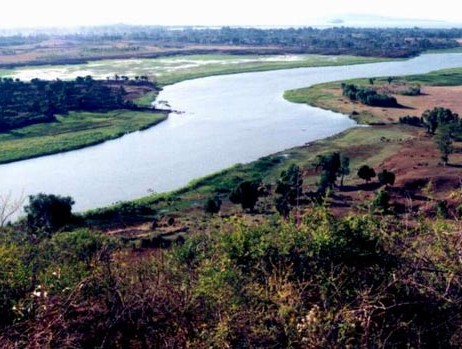Little Ado about Much
 The blog was originally written for National Geographic as part of the Energy Diet initiative. I was asked to keep a blog for a few weeks about my attempts to minimize my carbon footprint. It was rather challenging to do especially that during part of it I was climbing Aconcagua, the highest mountain in Latin America, solo.
The blog was originally written for National Geographic as part of the Energy Diet initiative. I was asked to keep a blog for a few weeks about my attempts to minimize my carbon footprint. It was rather challenging to do especially that during part of it I was climbing Aconcagua, the highest mountain in Latin America, solo.
Water scarcity is a real concern in Egypt. But with the world’s longest river flowing across the country, it’s easy for us to convince ourselves otherwise. Due to international regulations and the capacity of the River Nile, we can only consume a certain amount of water per year (55 billion cubic meters, or 14,529 trillion gallons). In 1900 we had 2,500 cubic meters (660,430 gallons) of water per person (smaller population).
Today, that number is down to 850 cubic meters (224,546 gallons) per person. The world water poverty line is 1,000 cubic meters [264,172 gallons], and the average is 3,000-4,000 cubic meters [792,516-1.3 million gallons] in Europe and some states in USA.
Having just returned from a 2.5-week remote mountain trip (to Aconcagua in the Andes), the notion of water scarcity is still quite vivid in my mind. When you climb solo, you carry a lot on your back, and so you need to make sure you are not carrying any superfluous weight. Preparing water by melting snow is also an inconvenient and time-consuming process, so you want to prepare just enough for your personal consumption. Even brushing your teeth becomes an art in using as little water as possible. These are all definitely useful habits to take home.
Already before venturing to Argentina I had made an effort around the house by switching from using bottled water to buying a mini water cooler (I keep the cooling function off) where I only need to change the large disposable plastic bottle once every month or so. This not only saves money but also avoids creating excessive plastic waste. However, in order to take positive and marked steps in solving this problem nationwide, we need to create a huge amount of awareness. By becoming more environmentally aware, we can be more water efficient at home and in business.
Some things to consider on a national scale:
- Our irrigation systems are extremely inefficient at 65% (vs. a world standard of 85-90%) due to channel leaking and antiquated techniques so capital investment
 here is critical
here is critical - Egypt is the world’s second importer of wheat at 6 million tons per year, surprisingly due to lack of water, not agricultural land
- The Nile’s water is polluted; more so as you go downriver (the city of Aswan Nile is crystal blue compared to Kafr-El-Sheikh’s murky shade)
- Rice and sugar cane use more water than most crops. So why do we produce so much rice? To feed our people? Do most people know that we are a net exporter of rice? This effectively means that we are a net exporter of water!
- Water shortage is extremely severe in areas that are away from the Nile or at the end of the channels (in many cases causing violent disputes over water)
There is no fast and easy solutions but I personally think, and I am no expert, that with an adjusted crop strategy nationwide and more awareness at the household level, we may be able to see a reasonably quick change for the better. Here are some ideas and I hope readers can suggest and discuss more:
- 1 acre of rice consumes 8,000 cubic meters (2.1 million gallons) of water per season (four months). Meanwhile, other crops like corn and soya use 5,000 cubic meters (1.3 million gallons) of water per season, giving a 3,000 cubic meters (792,516 gallons) net saving. Since we are a net exporter of rice, then lets grow more corn and soya.
Yet national policy takes time, so what can we do right away? - Cook only your requirement of rice and don’t throw it away
- Consume less sugar (healthier anyway) and again, don’t throw it away
- Half-flushing
- Separate clean water from bathing from sewage water to reuse in watering gardens
I have often wondered if making a small diet adjustment could really make a difference, so I decided to make my own little calculation below. Assuming that each one of us saves eating 1 gram of rice per meal:
- If one person eats rice 10 times a week, that’s a reduction of 10 grams, or 3,650 grams per year. Given a population of 80 million, this amounts to 292 million kilograms of rice saved per year
- According to an agriculture expert I spoke to, the average plot of land will produce 4 tons of rice per acre and need 8,000 cubic meters of water for the same plot of land
- Therefore, we need 2 cubic meters (528 gallons) of water per kilogram of rice, which brings us to a total savings of 584 million cubic meters (154.2 billion gallons) of water, which is a significant 1% of Egypt’s 55 billion water quota (mentioned above)
My calculations are a personal effort by doing some research, so they may not be the most accurate, but they clearly show that every individual can make a huge difference simply by changing small habits a small bit. It starts with us.








